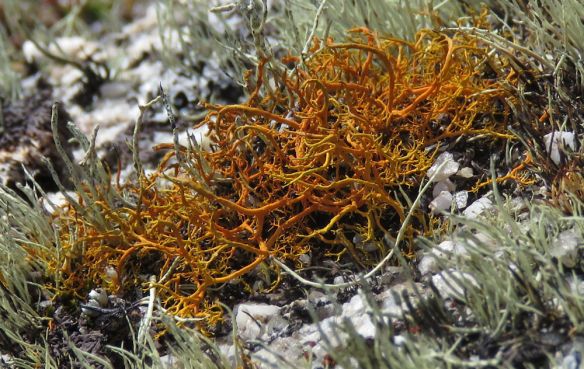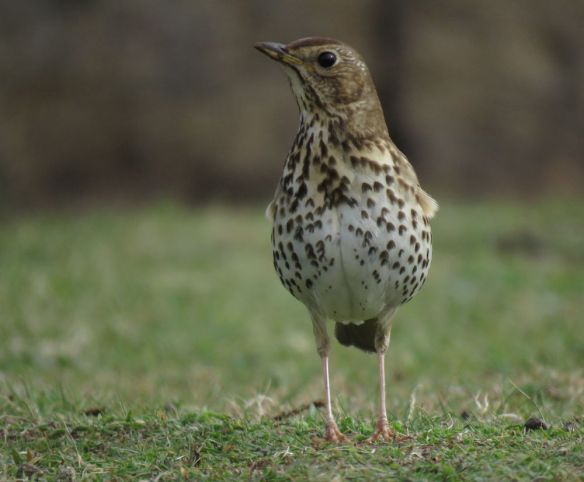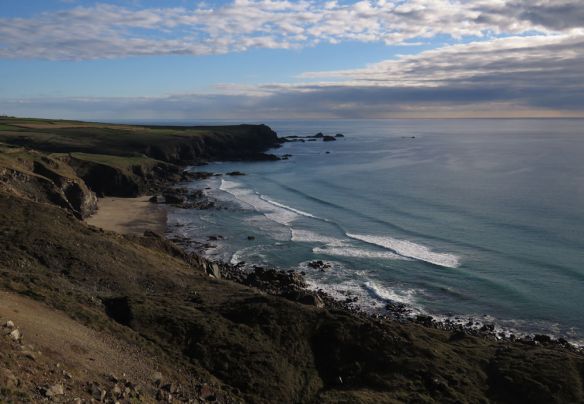Jen and I may be developing a serious case of nesiophilia (according to the dictionary, the inordinate fondness and hungering for islands). Going to the Scillies in the first place feeds the condition – but small islands cut off by the tide offer plenty of opportunities to indulge it still further.
Take, for example, Toll’s Island on the north-east corner of St. Mary’s… we had to cross to it as soon as we saw it, and I soon began speculating about how much fun it would be to camp on it when the tide is in.

Tolls Island, on the north-east side of St . Mary’s
Gugh, the much larger tidal island east of St Agnes, has a similar attraction. Jen wanted to stand in the middle of the bar just as the tide was receding. The only trouble was, the tide didn’t recede evenly, and still washed intermittently across the bar after we thought it had fallen enough, so Jen found herself running to avoid the sea washing over and into her boots! (She wasn’t quite quick enough though!!). A picture from later on in the day shows how much the sea level had fallen in a few hours.

The tide hadn’t cleared the sandbar to Gugh quite as completely as we’d thought.

This really was low tide on the Gugh bar!
We stayed on St Mary’s for the eight days we were there, and walked most of the coastline on the Saturday. It’s a photogenic island in itself, especially with views across to the other ones.

Round Island Lighthouse from the Town Beach.
We visited Bryher on one of the days, partly because there was a wildlife walk during the afternoon. The channel across to Tresco is particularly photogenic – both to the north (from one stretch of moorland to another) and to the much lusher south.

The view across to northern Tresco from Shipman Head Down on Bryher

Looking south to Tresco from Bryher’s Shipman Head Down
My idea of a wildlife walk generally involves birds and mammals, so I was surprised to be enthused about lichens by the excellent leader from the Isles of Scilly Wildlife Trust, Darren Hart. The moorland on Bryher has lots of lichen – which indicates a good air quality. In particular, the golden hair lichen is restricted to only a few places in the south-west of the UK, which are fortunate to have relatively clean air.

Golden hair lichen on Bryher – rare in the UK, and an indicator of clean air

a native 7-spot ladybird on Bryher
While on this walk I was very excited to see a 7-spot ladybird. I should not be excited about this, but the spread of the invasive Harlequin has meant that seeing a native 7-spot was an event. Six years ago when the species was spreading I heard stories about it cannibalising our native species. I didn’t believe it – until the first one I saw in Cheltenham was, grotesquely, doing exactly that to a native 2-spot. Since then, the only species I have seen has been the Harlequin – until last week when I saw a 7-spot on Bryher.
One island we were keen to visit more thoroughly was St Martin’s, which tends to get overlooked, but has a quiet charm of its own – definitely helped by an outstanding bakery! We decided to explore the eastern and northern coasts. As we approached the daymark in the north-east corner, a group there were about to take a photograph of themselves – so it made far more sense for me to take theirs and for them to return the favour!

Jen and me at the daymark on St Martin’s.

Panorama of the St Martin’s coast from near the daymark in the north-east corner.

Iceland Gull off The Garrison on St Mary’s
The bird-watching during the trip as a whole was less exciting than I was expecting, and I was not anticipating the most notable bird being a gull! I’d seen reports of a couple of juvenile Iceland gulls at Porthloo on St Marys, so saw my first one there – but then found another by chance just off The Garrison at Morning Point. Its whiteness meant that even with my relatively low interest in gulls, I couldn’t really miss it!

Jen: “Do I look fat?”
Me: “Yes. That’s because you’re preggers”
We were keen to take a photo of Jen being preggers, and had several goes at doing so. We eventually realised that a deliberately posed one would look better than one that was meant to look natural while Jen was holding an unnatural pose! We took this one on our walk around the Garrison, shortly after encountering the Iceland Gull.
My attempts at wildlife photography were more limited than I expected but the trip around the Garrison was more fruitful – partly because of an obliging meadow pipit and a couple of showy song thrushes – which are renowned for their approachability compared to the mainland. So I’ll finish with those!

Being stared at by a Meadow pipit

Song thrush on St Mary’s. Getting down to the thrush’s level helped with this photo.








































